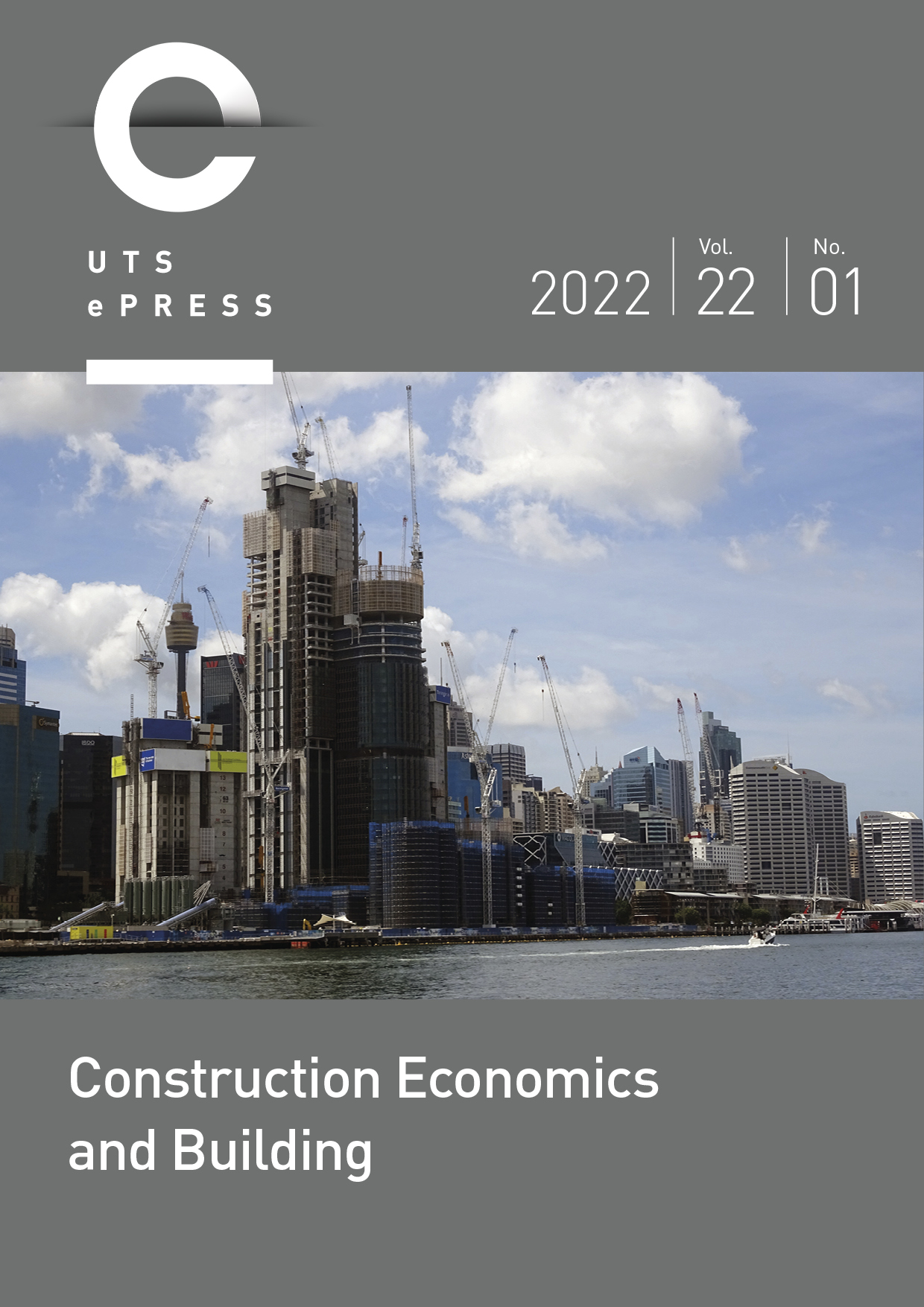Risks of Implementing Sustainable Construction Practices in the Nigerian Building Industry
Main Article Content
Abstract
This study assessed the risks level associated with implementation of sustainable construction practices through a questionnaire survey distributed to 256 building professionals in Nigeria. It identified 47 risk factors with different likelihood of occurrence and magnitude of impacts. A quantitative risk analysis result based on mean value method and risk prioritisation number showed that the three top-ranked risk factors with highest likelihood of occurrence were unavailability of sustainable materials and equipment, more complex and unfamiliar construction techniques and processes, and high initial sustainable construction costs; whereas the three top-ranked risk factors with highest magnitude of impacts were high initial sustainable construction costs, poor and inefficient communication among project participants, and high cost of sustainable materials and equipment. The criticality index result identified 23 critical risk factors which mostly related to knowledge and awareness, cost, regulatory framework, building materials and socioeconomic issues. However, the Wilcoxon Signed-rank test result indicated that there is significant difference (z = -3.207, p<0.001) between the likelihood of occurrence and magnitude of impacts of the risks factors associated with implementation of sustainable construction practices in Nigeria of which the effect was moderate (r = 0.468). Furthermore, the study revealed that there is no significance difference in the risk level of the risk factors associated with implementation of sustainable construction practices based on the respondents’ roles (p>0.05). The study, therefore, recommended for training of construction practitioners in the multi-risk management approaches and increasing awareness through education on sustainable construction concept for building industry stakeholders. It further recommended for developing of new sustainable and affordable building materials through research institutes like Nigerian Building and Road Research Institute (NBRRI) with appropriate regulatory and policy frameworks for successful sustainable building projects.
Article Details
Section
Authors who publish with this journal agree to the following terms:
a) Authors retain copyright and grant the journal right of first publication with the work simultaneously licensed under a Creative Commons Attribution License that allows others to share and adapt the work with an acknowledgement of the work's authorship and initial publication in this journal.
b) Authors are able to enter into separate, additional contractual arrangements for the non-exclusive distribution of the journal's published version of the work (e.g., post it to an institutional repository or publish it in a book), with an acknowledgement of its initial publication in this journal.
c) Authors are permitted and encouraged to post their work online (e.g., in institutional repositories or on their website) prior to and during the submission process, as it can lead to productive exchanges, as well as earlier and greater citation of published work (See The Open Access Citation Advantage Service). Where authors include such a work in an institutional repository or on their website (ie. a copy of a work which has been published in a UTS ePRESS journal, or a pre-print or post-print version of that work), we request that they include a statement that acknowledges the UTS ePRESS publication including the name of the journal, the volume number and a web-link to the journal item.
d) Authors should be aware that the Creative Commons Attribution (CC-BY) License permits readers to share (copy and redistribute the work in any medium or format) and adapt (remix, transform, and build upon the work) for any purpose, even commercially, provided they also give appropriate credit to the work, provide a link to the license, and indicate if changes were made. They may do these things in any reasonable manner, but not in any way that suggests you or your publisher endorses their use.
